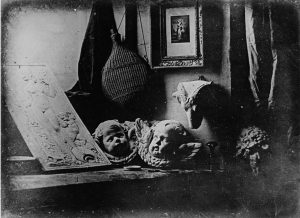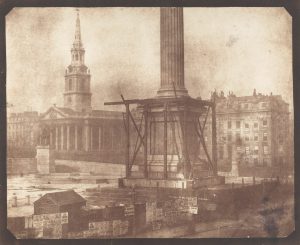Birth of a Medium
“Every chip of stone and stain is there.” 1

In the late eighteen-thirties, experiments in photography took place in France and Britain. Among the earliest images produced from these experiments were by Louis Jacques Mande Daguerre and William Henry Fox Talbot. In January 1839, Daguerre created his named photographic process, the Daguerreotype – an image on a mirrored silver surface that appeared either positive or negative depending on the angle. However, each Daguerreotype was its own unique image that could not be replicated. The future of the photographic medium’s reproduction lay with Fox-Talbot’s Calotype. It was able to easily record buildings and sculpture, and then reproduce these images from a “negative” process using silver iodide applied to paper.

The differences between Fox Talbot’s scientific focus versus Daguerre’s arrangement of objects to create “art” would initiate the debate between art and science that continue well into the twentieth century. The camera demonstrated the difference between the interpretation of nature and its actual documentation, or one could say between the creative arts and the mechanical.2
For the public, however, these experiments were mesmerizing. Photograph seemed nothing short of miraculous in its ability to record reality.3
Next →
←Previous
- Szegedy-Maszak, Andrew. Antiquity and photography: early views of ancient Mediterranean sites. London: Thames & Hudson, 2005. 12 ↵
- Fawcett, Trevor. Graphic Versus Photographic in the Nineteenth-century Reproduction. Blackwell Publishing, 1986. 6 ↵
- Szegedy-Maszak, Andrew. Antiquity and photography: early views of ancient Mediterranean sites. London: Thames & Hudson, 2005. 12 ↵